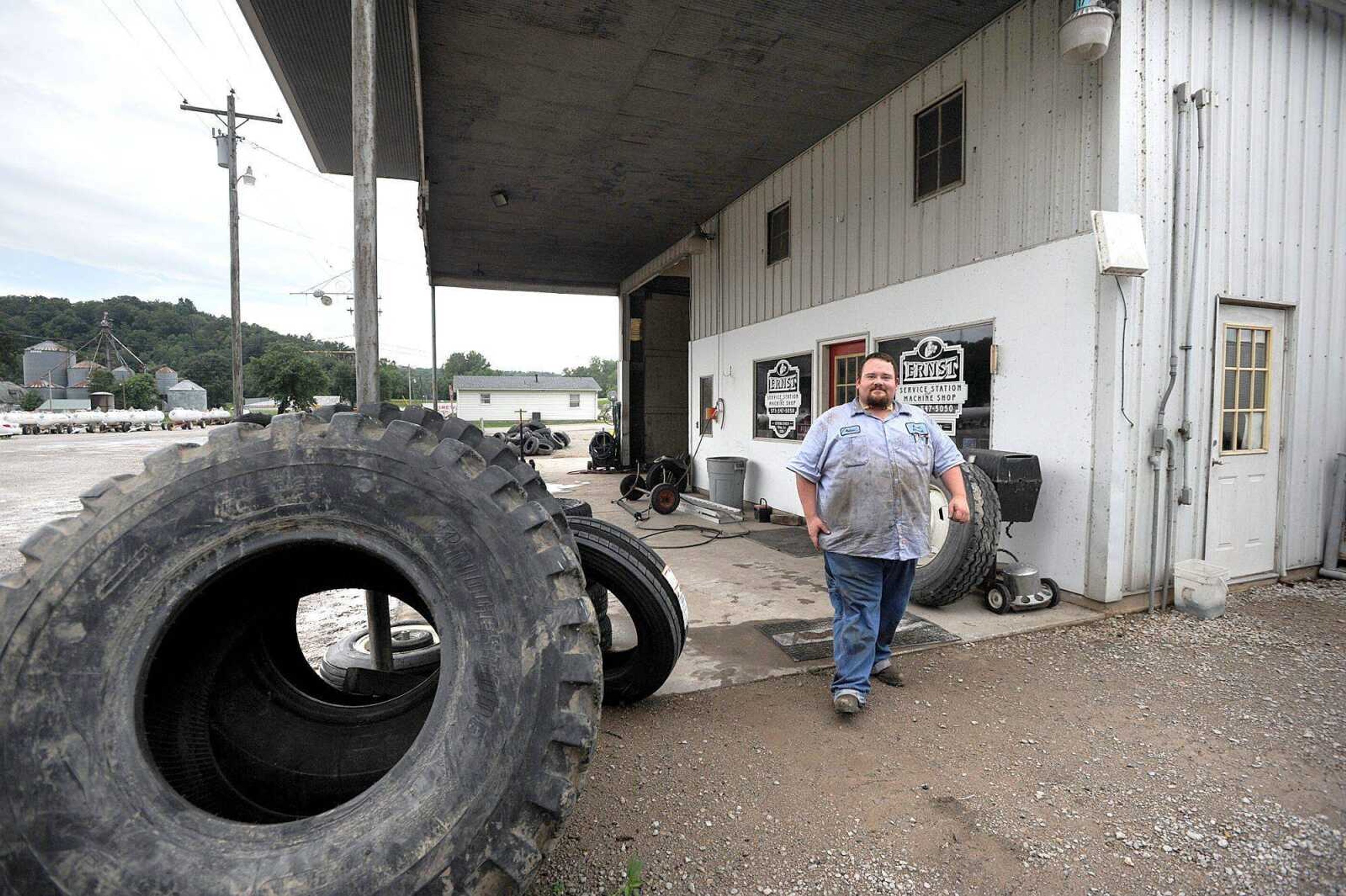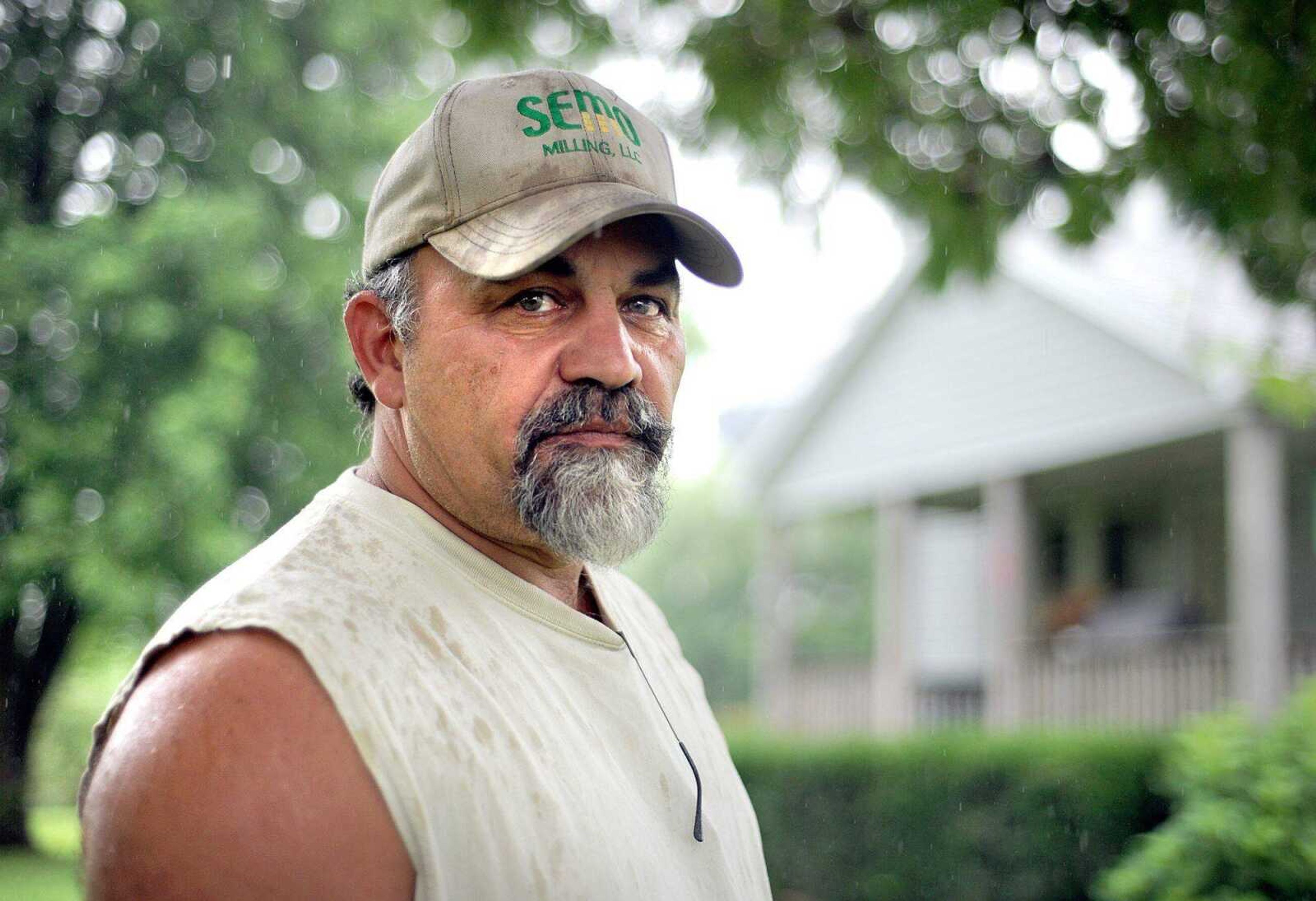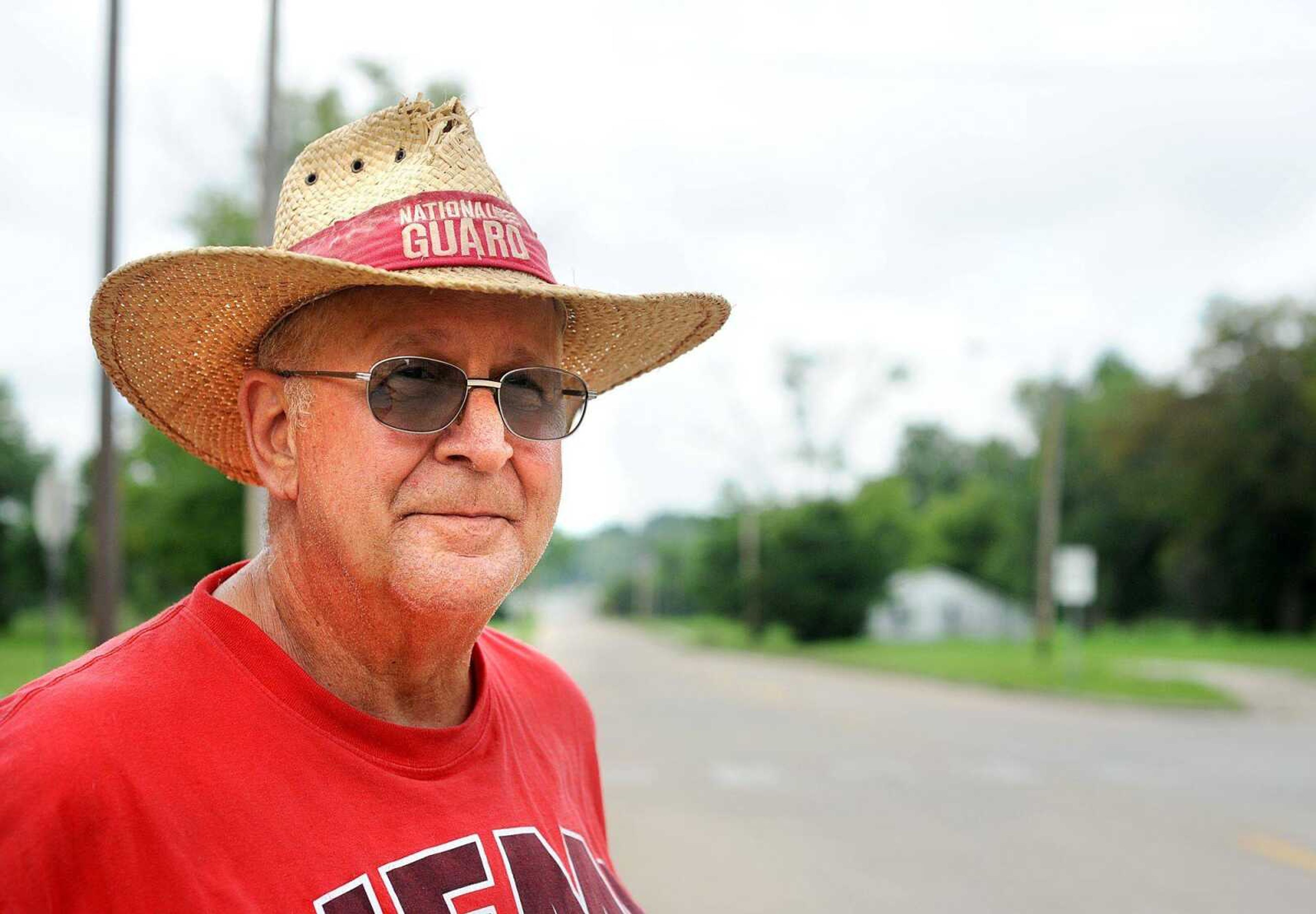Remembering the 1993 flood: Locals look back at flood fight
McBride Nathan Ernst, operator of Ernst Service Station and Machine Shop, was a junior in high school when the Bois Brule Bottoms were flooded by a levee break around 2 a.m. on July 25, 1993. He remembers that the water took about 14 hours to begin flooding the small farming community of McBride. Knowing the flood was coming, all residents could do was "hurry up and wait," he said...
Nathan Ernst
McBride

Nathan Ernst, operator of Ernst Service Station and Machine Shop, was a junior in high school when the Bois Brule Bottoms were flooded by a levee break around 2 a.m. on July 25, 1993. He remembers that the water took about 14 hours to begin flooding the small farming community of McBride. Knowing the flood was coming, all residents could do was "hurry up and wait," he said.
"It was slow, like somebody went and left on a garden hose," Ernst said of floodwaters that encroached the town.
Despite damage to the shop and service station once owned and operated by his grandfather and father before him, the family wasn't willing to give up living and working in the Bois Brule Bottoms. A high watermark, over 15 feet off the ground, is still visible today on the underside of an awning attached to the shop.
Many residents, following the sandbagging and other flood-fighting efforts in July 1993 and the months following, Ernst said, would gather for "beer parties," to help keep their spirits up while facing the unknown. Many had spent their day transporting sandbags into McBride with a borrowed tugboat and barge.
"There was a lot done, but also there was only so much you could really do," Ernst said. "You knew you might lose everything no matter what."
Alan Huber
McBride

Alan Huber, a farmer who lives in the Bois Brule Bottoms, has stories of the '93 flood to share from start to finish.
Photos of Huber and his friends and family fighting the flood showed up in the New York Times and National Geographic. His younger brother helped rescue a member of the U.S. Army Corps of Engineers that nearly washed away when the levee he was standing on gave way beneath him, leading to a flood of more than 26,000 acres. He and several friends watched as muddy water took over the white carpet in the first floor of his grandmother's house, never imagining that 19 inches of water would later stand in the second floor. And he recalled retrieving sunburned pigs by boat for days. The only way the animals survived were by clinging to trees.
A phrase Huber repeats often as he talks about the flood: "Yep. It was a quite a deal."
Once the water receded, months into the fall of 1993, buildings were left in a mess of mud, corn stalks and cans of frosting from Gilster-Mary Lee.
Huber said he is wary of flooding that occurs in years that end with a certain number.
"It's always been a year that ends in 3," he said. There was '43, '53, '73 and '93. You tell me there's not something to that."
Alan Wright
Commerce

Alan Wright has seen plenty of floods during a lifetime living in Commerce. But he's one of just a few who have stayed to put up with them.
Wright owns one of the only businesses still left in Commerce, Wright's Auto Repair.
A former member of the town board, he remembers well the feeling of residents who did not want to sell their properties to the federal government in 1993 for the fear their community would never recover. He was on their side when their fears were realized, he said.
"You couldn't ever do nothing with it," Wright said of the residents' opposition toward buying out of properties. "So even if we had people back then who hadn't moved away, and there was some miracle and a levee was built, I doubt we could ever do anything now."
Wright admits Commerce is a place that has seen much better days.
"It's been a drastic change since that big flood," he said. "Before and for a little while after we had a little store, pool hall and tavern. There's not enough people here now to support any of that."
Wayne Moore
Cape Giardeau

Ironic though it must seem now, said Wayne Moore, a retired city employee and member of Red Star Baptist Church, the flood of 1993 did something good in the neighborhood.
He volunteers at a food pantry housed at the church. Over 200 people received help from the pantry last month. Moore said a truck bringing a load of food and supplies to the devastated neighborhood in 1993 established the church as a go-to place for help for people seeking relief from the flood, and that tradition of giving has remained.
Still, Moore said, the way the Red Star neighborhood is now, many years after the floods of 1993 and 1995 caused many residents to sell their properties to the federal government and move away, saddens him.
"I saw so much suffering here," Moore said, standing on North Main Street earlier this week. "You look down here, there were so many houses," he said, casting an arm to the south, where several empty lots are seen. "They were friends, neighbors, people we went to church with. A whole lot of the folks that lived down here were church members, that made it all the more worse."
The floods, along with the advanced age of many residents of the Red Star neighborhood, means today that the church's congregation has grown smaller, Moore said.
During the flood of 1993, Moore had a fixed routine. He worked as part of the city's 24/7 crew who made sure services were going to help residents with flooded homes. After work, Moore said, "it was grab a bite, shower and take a nap. I knew I better get that done because someone down here would be needing something, and I wanted to be there for them."
Connect with the Southeast Missourian Newsroom:
For corrections to this story or other insights for the editor, click here. To submit a letter to the editor, click here. To learn about the Southeast Missourian’s AI Policy, click here.








